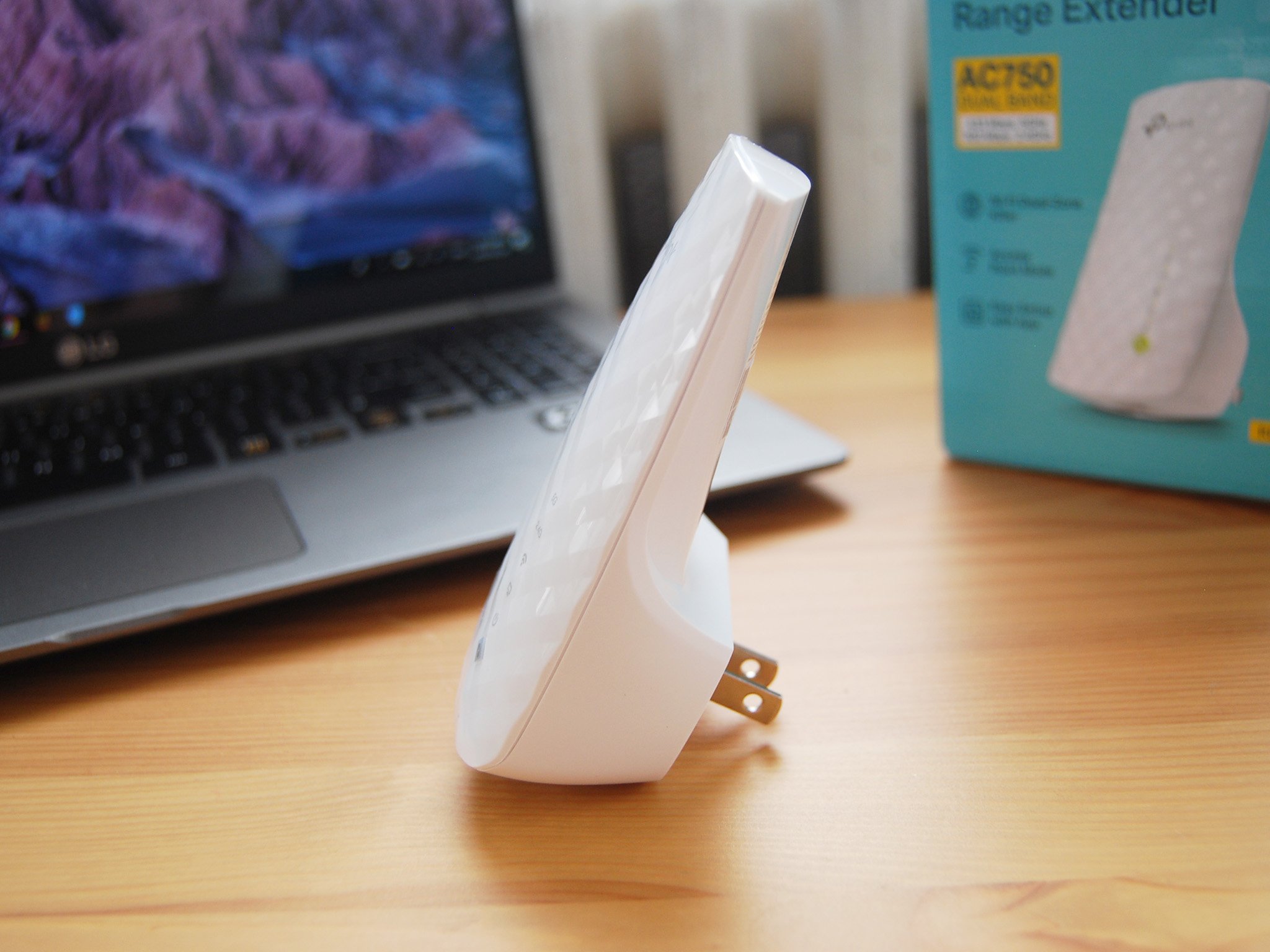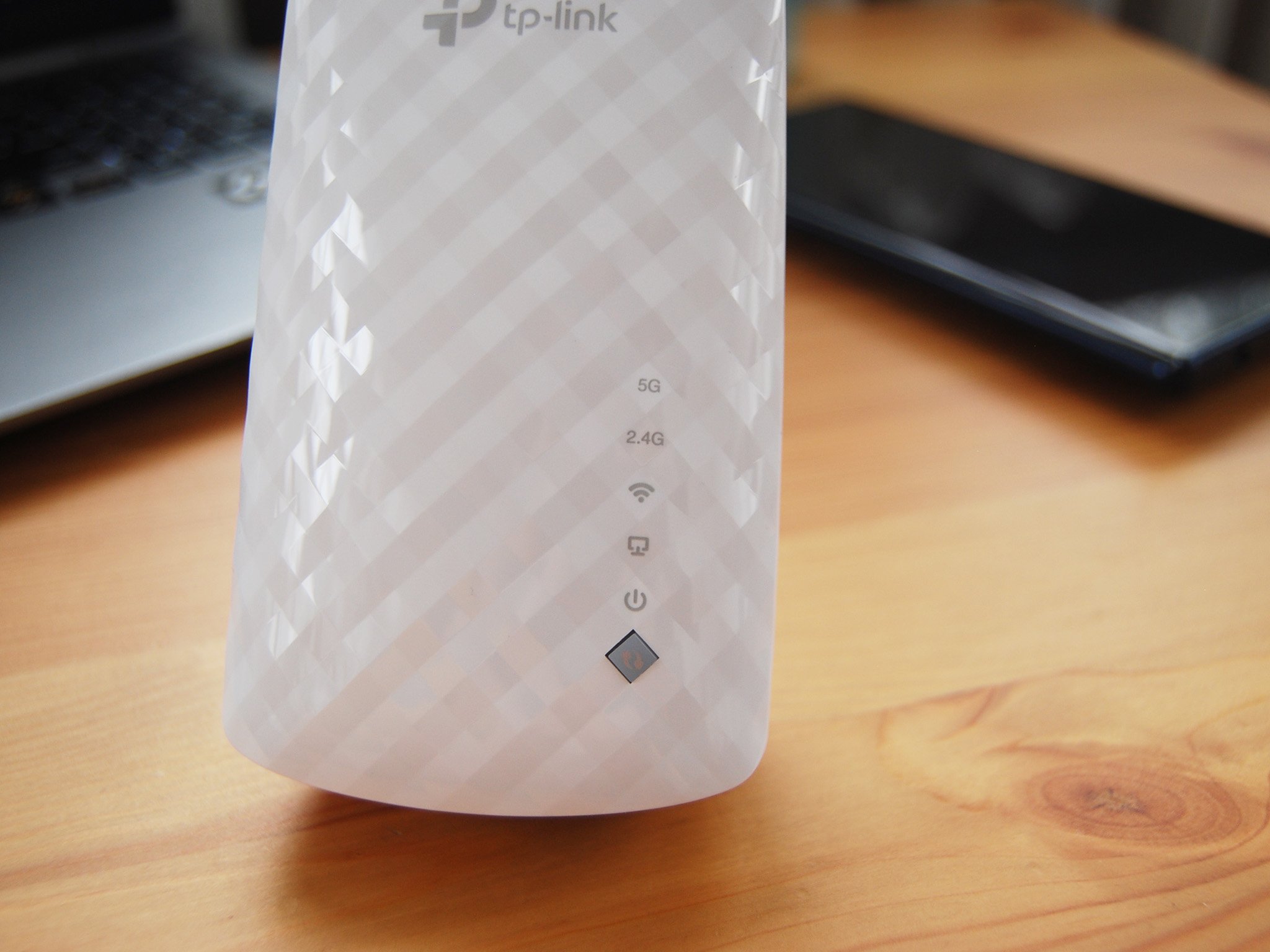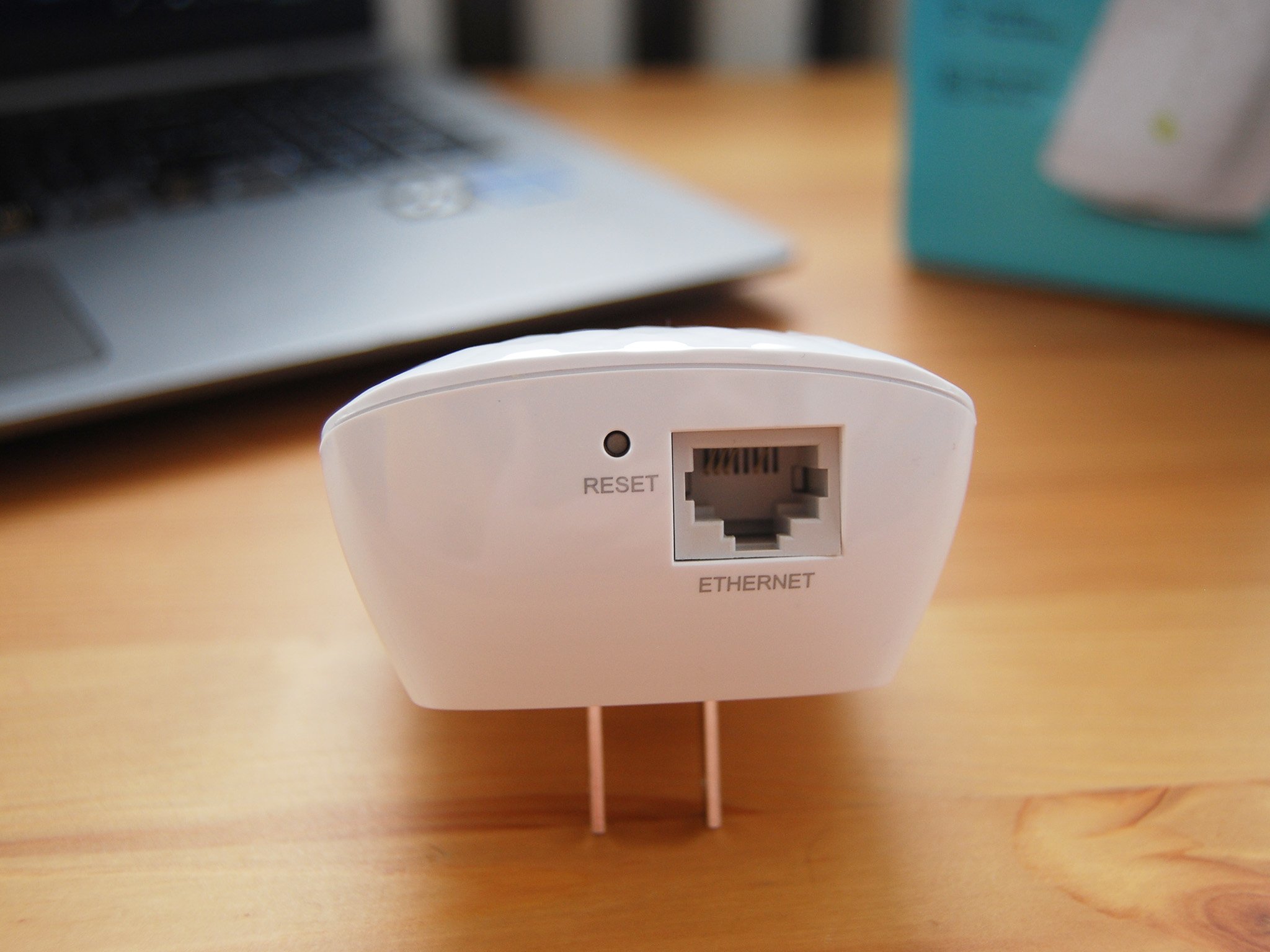TP-Link is well known in the wireless networking game, and its recent release of the RE220 range extender bolsters its lineup even further. It's a big step up over the extremely popular (but aging) TP-Link N300, which offers single-channel speeds up to just 300 Mbps. While the older hardware is still selling, many people with a more modern main router with 2.4 GHz and 5 GHz bands can now take advantage of the RE220, which brings a slick redesign and combined speeds up to 750 Mbps. I used the RE220 range extender for about to week to see what it's all about.

$35Bottom line: If you're looking to extend the signal of your low- or mid-range router, TP-Link's RE220 is a low-cost option that gets the job done.
Pros
- Can use one band for dedicated backhaul
- Can be used as an Access Point
- Streamlined design
- Easy setup and management
- Respectable performance and range
Cons
- No auto switching between bands
- No the best option for use with a high-performance router
What you'll love about TP-Link's RE220 range extender
Instead of the boxy design with exterior antennas that the older N300 extender uses, the RE220 has been refined into a sleek, small package that resembles more a plug-in air freshener than a range extender. The three antennas are hidden inside, the Ethernet port is hidden on the bottom, and there's a single WPS button on the front along with five status lights that tell you pretty much everything you need to know at a glance. It's small enough that you can plug it in just about anywhere with no risk of tying up both wall plugs.
| Category | Spec |
|---|---|
| Performance | AC750 (300 Mbps + 433 Mbps) |
| Frequency | 2.4 GHz, 5 GHz |
| Wireless standards | 802.11a/b/g/n/ac |
| Antennas | Three internal |
| Ports | One Ethernet |
| Dimensions | 4.3 inches x 2.6 inches x 3.0 inches (110 mm x 65.8 mm x 75.2 mm) |
Setup can be handled with TP-Link's Tether app (available for Android or iOS), with a web browser, or by hitting the WPS button on your main router and doing the same on the RE220 when it's plugged in. I couldn't seem to get the WPS method to work correctly, but with the app installed — which gives you access to plenty more options anyway — it took only about two minutes to get set up. I connected my phone to the extender's Wi-Fi signal, chose a password, selected the 2.4 and 5 GHz networks projected by my main router, and entered their respective passwords. Once completed, the EXT-appended networks (you can change the names) appeared across my devices.
A status light on the front of the RE220 lets you know if you're within optimal range of your main router, and you're free to position the extender elsewhere until you find an ideal spot. A connection is handled automatically when plugged in again, so no worries there. By default, the RE220 broadcasts and extends both the 2.4 and 5 GHz bands simultaneously, giving you more options to connect your devices. The downside here is that backhaul traffic over those same radios essentially cuts speeds in two. To solve this problem, TP-Link added a "High-Speed Mode" that lets you choose one radio or the other to handle backhaul traffic. Performance is considerably better, but you'll only be extending either the 2.4 or 5 GHz band with the other reserved for the signal back to your main router.
To test how well the TP-Link RE220 extends the range of my dual-band router, I ran some tests first to see what Wi-Fi speeds I'm getting on a regular basis without an extender. I'm using an ISP-provided Hitron router and live in a house that's about 1,100 square feet.
Hitron (2.4 GHz)
| Location | Ping | Down speed | Up speed |
|---|---|---|---|
| Office (30 feet) | 12 ms | 45.26 Mbps | 15.48 Mbps |
| Basement (40 feet) | 11 ms | 24.79 Mbps | 13.11 Mbps |
Hitron (5 GHz)
| Location | Ping | Down speed | Up speed |
|---|---|---|---|
| Office (30 feet) | 10 ms | 57.01 Mbps | 15.84 Mbps |
| Basement (40 feet) | 10 ms | 25.88 Mbps | 15.46 Mbps |
Next, I placed the RE220 about halfway between the router's spot in the living room and my office on the same floor, then moved the extender to about halfway between the main router and the back corner of my basement. Most people won't want to move the extender once it's found a suitable spot, but for the sake of testing, it was necessary. The range extender had both bands active for these tests, meaning there was no dedicated backhaul band in play.
TP-Link RE220 range extender (2.4 GHz)
| Location | Ping | Down speed | Up speed |
|---|---|---|---|
| Office (30 feet) | 10 ms | 27.54 Mbps | 15.56 Mbps |
| Basement (40 feet) | 11 ms | 42.77 Mbps | 15.78 Mbps |
TP-Link RE220 range extender (5 GHz)
| Location | Ping | Down speed | Up speed |
|---|---|---|---|
| Office (30 feet) | 10 ms | 47.89 Mbps | 15.83 Mbps |
| Basement (40 feet) | 10 ms | 35.84 Mbps | 15.61 Mbps |
While both bands saw a decrease in performance at the relatively close office range, there was a bit of a boost across both bands when testing at the longer basement range. If you're interested in having both bands in play at all times, you might not see a worthwhile jump in performance unless you have a far larger home with corners that can't be hit with your main router.
All the latest news, reviews, and guides for Windows and Xbox diehards.
Next, I turned on the RE220's High-Speed Mode that lets you choose either the 2.4 GHz or 5 GHz radio to act as a dedicated backhaul band between the extender and main router. I re-ran the same tests with the 5 GHz band providing backhaul to the main router, leaving the 2.4 GHz radio open for connecting devices.
TP-Link RE220 range extender (5 GHz backhaul)
| Location | Ping | Down speed | Up speed |
|---|---|---|---|
| Office (30 feet) | 10 ms | 108.04 Mbps | 15.80 Mbps |
| Basement (40 feet) | 11 ms | 98.59 Mbps | 15.42 Mbps |
It's clear here that you'll get a huge increase in performance by reserving the 5 GHz band for backhaul traffic, but it also means you can't connect devices to the 5 GHz band. Again I ran the tests, this time with the 2.4 GHz band providing backhaul and the 5 GHz band connecting to devices.
TP-Link RE220 range extender (2.4 GHz backhaul)
| Location | Ping | Down speed | Up speed |
|---|---|---|---|
| Office (30 feet) | 11 ms | 53.41 Mbps | 15.87 Mbps |
| Basement (40 feet) | 10 ms | 100.44 Mbps | 14.74 Mbps |
Using the 2.4 GHz band for backhaul traffic doesn't quite deliver the same performance at the closer range, but it performs better at long range. If you have a medium-sized home and are concerned with extending one band or the other (reserving the other for backhaul), the RE220 should do an admirable job. For those with a wired network, there's also the option of using the Ethernet port on the extender to set up an Access Point, which creates a completely new wireless network. That same Ethernet port can also be used to connect a wired device nearby.
TP-Link's RE220 is a versatile, sleek range extender that's easy to set up and easy to manage.
TP-Link claims the RE220 can extend your router up to about 3,200 square feet. It's certainly overkill for my 1,100 square-foot home, and I saw a performance drop at a closer range when not using a dedicated backhaul band, so while it might not quite hit the number claimed, it should be suitable for multi-level homes with plenty of users.
Within the app or browser, you have access to quite a few settings, including security protocols, DNS, Ethernet port host network, power schedule (you can set the extender to sleep at certain times), a device blacklist, High-Speed Mode settings, LED controls, and firmware updates. Everything is laid out well, and there's not much confusion navigating the menus. It might not be as in-depth as some networking pros would like, but for most people, the available settings should satisfy.
What you'll dislike about TP-Link's RE220 range extender
I didn't come across any issues with the RE220 while using it for about a week. The signal didn't drop, it responded promptly to any changes made in settings, and it handled all devices I connected. There are, however, a couple of things to keep in mind.
There's no automatic band steering here, so you do have to choose either the 2.4 or 5 GHz network on your device and stick with it until you manually swap over. If you're interested in having your devices move between radios as performance dictates, you probably want to check out a mesh Wi-Fi networking system, especially if you're having issues reaching all corners in your home.
The RE220's AC750 theoretical speed — 300 Mbps over the 2.4 GHz radio and 433 Mbps over the 5 GHz radio — won't reflect well with a high-end main router, and you'll likely only see a drop in performance. The RE220 is best paired with a low- or mid-range router, which is what most people are using.
Should you buy the TP-Link RE220 range extender?
Considering the $35 price tag and the fact that I really had no issues with the RE220, save for the quick WPS connection not working, the RE220 range extender is easy to recommend. It's versatile thanks to an Ethernet port and High-Speed Mode that lets you choose a band for dedicated backhaul, and it will considerably extend your network. It's easy to set up and manage, and there's always 24/7 tech support waiting to give you a hand.
As long as you're not looking for something to pair with your beefy, high-end main router and don't mind not having automatic band steering, the RE220 is a cost-effective way to blanket all corners of your home in a Wi-Fi signal. Despite the low price, the RE220 comes with a two-year warranty should anything fail, giving you a bit of extra peace of mind.

Affordable networking
TP-Link's RE220 is a sleek, versatile range extender that gets the job done without much issue. It's easy to set up and manage, it has a High-Speed Mode that lets you choose a band for dedicated backhaul, and the Ethernet port can be used to set up an Access Point for added versatility.

Cale Hunt brings to Windows Central more than nine years of experience writing about laptops, PCs, accessories, games, and beyond. If it runs Windows or in some way complements the hardware, there’s a good chance he knows about it, has written about it, or is already busy testing it.




